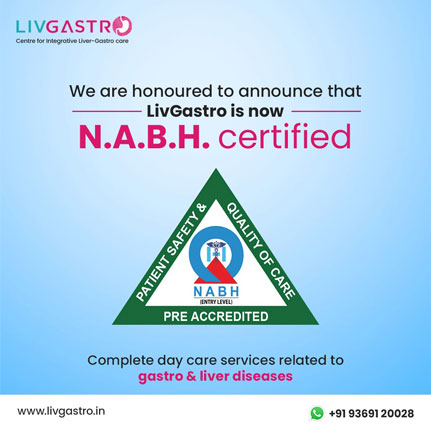
Team LivGastro provides utility based model of care that integrates specialists, primary care , laboratory, imaging and other health services to give patients a convenient and superior outcome along with a pleasant experience. Since we primarily focus on outdoor-patient care, on the site instant testing along with detailed and accurate results, we enable our patients and their families save
a lot of effort, time and money.
This is a procedure to understand and check the condition of a patient’s Large Intestines. The name of the procedure is derived from the special type of tube which is inserted into the intestine to monitor its activities and to address the problem, the Colonoscope. This is a 4 foot long and flexible tube. It is one finger thick and has a camera and a light source at the top. The doctor, usually a gastroenterologist inserts the tip of the colonoscope through the patient’s anus and finally to the cecum.
There is no one reason behind this answer, but several. In short, colonoscopy is done as part of a screening process and for health investigation. Colonoscopy is done for:
Colonoscopy can be taken more than once in a lifetime, but the number of time it is to be taken depends on the severity of problems.
Before the operation, the patient is monitored for blood pressure, rhythm of the heart and dissolved oxygen in blood. Sedatives, through an intravenous line, are then given to make the patient relaxed. Sometimes, additional sedatives are administered to reduce pain and to bring a sense of sleepiness.
When the procedure or the operation begins, the patient is made of lie on the back or on his side. From this position, the doctor slowly advances the colonoscope up to the small intestine, and finally to the large intestine. The doctors examine the intestine’s walls and determine where to problem is. The operation normally takes 15 to 30 minutes, but operations of 1 hour are not uncommon either. If for some reason, the problem cannot be addressed at one sitting, the doctor may desire to opeate again at some other time.
In colonoscopy, at times the doctors may need to examine an area closely. At times like these, they use an inbuilt forceps in the colonoscope itself to collect samples of the area. This sample is studied in the laboratory for infection and other complications. If there is an infection, then the doctors may order the culturing of bacteria, fungi and even certain viruses to be introduced and eliminate the threat. If bleeding is detected, it is checked by a number of methods. In some cases, polyps are detected. These are not harmful by themselves, but may become cancerous. If such is the case, these are removed easily.
The possibilities in Colonoscopy are rare. Their chances of happening are minor especially when the operations are done by experienced doctors. At times, there may be internal bleeding, but it is nothing to worry about because the bleeding in most cases is minor and limited in area. Rarely are blood transfusions are needed.
There are rare cases when the patient experiences a tear in the walls of the colon. However, these do not require surgery.
In the beginning of the operation, sedatives are used. Sometimes, these sedatives cause localized irritation and severe pain the stomach. While these may occur, their chances of occurring are less than 1%.
